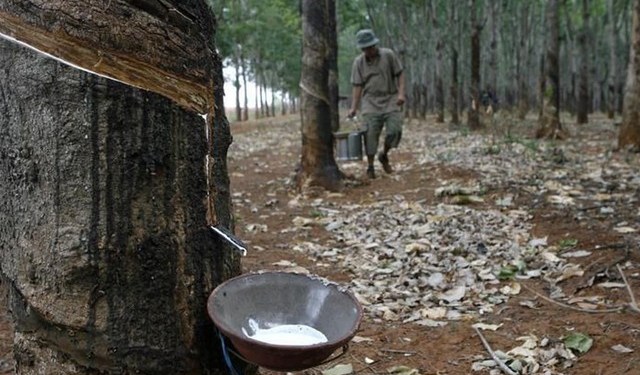Asian butadiene prices hit a more than six month high Monday on tight availability amid the startup of new synthetic rubber plants in China and higher naphtha feedstock costs.
Butadiene prices surged 44% from a 2012 low of $1,455/mt FOB Korea on December 7 to $2,100/mt on Monday, Platts data showed Tuesday.
The last time the butadiene benchmark was that high was on August 3, 2012, when it stood at $2,239/mt.
Asian naphtha prices stood at $1,023.25/mt CFR Japan Monday, up 7% from $959.625/mt on January 2.
In China, the expected startup of new domestic butadiene rubber plants placed additional demand on butadiene supplies.
Sinopec Maoming is due to start up a new 100,000 mt/year BR plant in the first quarter, while Zhejiang Transfar plans to start up a 100,000 mt/year BR plant by the end of Q1. In Q2, YPC-GPRO (Nanjing) Rubber is due to start up a 100,000 mt/year BR plant at Jiangsu province, and Petrochina’s Sichuan Petrochemical plans to bring a 150,000 mt/year BR plant online by mid-year.
This follows the startup of new synthetic rubber plants in 2012 that resulted in China’s butadiene imports for the year soaring almost 47% year on year to 344,825 mt, data published late January by the China Customs Statistics Information Center showed.
One of those new plants was started up by German specialty chemicals maker Lanxess — a 30,000 mt/year joint-venture nitrile butadiene rubber plant at Nantong — on May 23.
Recent butadiene price hikes have also been supported by lower production in South Korea due to a change in feedstock composition and technical woes.
Lotte Chemical began using 10% LPG as feedstock for its steam cracker at Daesan from February 1 to cope with rising naphtha costs.
The Daesan steam cracker, which can make 1 million mt/year of ethylene and 500,000 mt/year of propylene, supplies crude C4 feedstock to a 150,000 mt/year butadiene extraction unit at the same location.
The change will not affect output of ethylene and propylene but will lower production of butadiene.
Similarly, Yeochun Naphtha Cracking Center plans to use 10% butane as feedstock for its No. 1 and No. 2 naphtha-fed steam crackers at Yeosu to 10% from March 1. The No. 1 unit can produce 860,000 mt/year of ethylene and 450,000 mt/year of propylene; No. 2 580,000 mt/year of ethylene and 280,000 mt/year of propylene; and No. 3 470,000 mt/year of ethylene and 240,000 mt/year of propylene. No butane will be used in the No. 3 cracker.
The three supply crude C4 feedstock to a 240,000 mt/year butadiene extraction unit that is due to undergo a month-long turnaround in May.
That unit has been operating at 80% of its capacity since February 8, down from 100% earlier, due to contamination of an extractor caused by polymerization. This equates to the loss of a 1,500 mt butadiene cargo/month.
Also from March 1, Samsung Total will use 10% of butane as feedstock for its naphtha-fed steam cracker at Daesan, which can produce 1 million mt/year of ethylene, 600,000 mt/year of propylene and 114,000 mt/year of butadiene.
REDUCED RUNS IN S KOREA HIT EXPORTS TO CHINA
The reduced runs will affect South Korea’s butadiene exports to China.
South Korea was the largest supplier of butadiene to China in 2012 at 127,000 mt, up 57% from 2011, and accounting for about 37% of the total 344,825 mt that China imported last year.
Tight availability of deepsea cargoes also propped up spot butadiene prices in January due to steam cracker run cuts in Europe in Q4 2012 and an unexpected shutdown. That tightness is expected to continue because of turnarounds scheduled for Q2.
A 745,000 mt/year Naphtachimie-operated steam cracker at Lavera, France, has been shut since December 22 over a technical issue affecting one of its main compressors. That cracker feeds a 120,000 mt/year butadiene unit.
Shell’s 940,000 mt/year Moerdijk cracker in the Netherlands, BASF’s 1.08 million mt/year unit in Antwerp, Belgium, and BPRP’s 540,000 mt/year unit at Gelsenkirchen, Germany, will be offline for turnarounds between May and June.
The Antwerp cracker is the biggest in Europe and shuts only once every five to six years for maintenance work.
Moerdijk can deliver 115,000 mt/year of butadiene, while a new 155,000 mt/year butadiene unit being built at Antwerp is due to start up in 2014.
The Netherlands exported 50,900 mt of butadiene to China in 2012, up 122% year on year, and comprising 15% of China’s total butadiene imports.
Citing tight supply and expected demand from China, butadiene producers in South Korea are targeting $2,200/mt FOB Korea for March cargoes, which are limited due to the domestic use of butane as a cracker feedstock and YNCC’s unit operating at a reduced rate.
Source: Platt.com



























